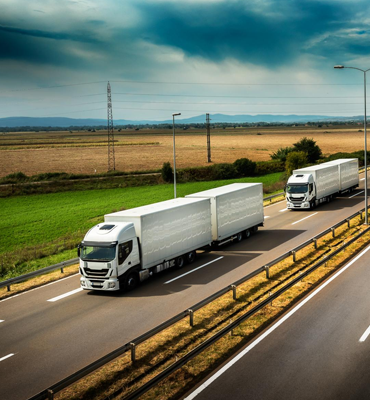Freight Transport By Road
Freight transport by road, also known as road freight or trucking, refers to the transportation of goods and cargo over land using trucks, lorries, or other motor vehicles. It is one of the most common and widely used methods of freight transportation worldwide, serving as a critical link in the supply chain and supporting various industries.
Key aspects of freight transport by road include:
-
Types of Vehicles:
Road freight utilizes various types of vehicles, including trucks, lorries, trailers, and vans, with different sizes and configurations to accommodate various types and quantities of cargo.
-
Flexibility:
Road freight offers a high level of flexibility in terms of routes and destinations. Trucks can access remote areas and deliver goods directly to the consignee's doorstep, providing a door-to-door service.
-
Regional and Local Transport:
Road freight is commonly used for regional and local transportation of goods between cities, towns, and industrial zones, as well as for the last-mile delivery to reach the final destination.
-
Adaptability:
Trucks can transport a wide range of goods, including consumer goods, perishable items, raw materials, machinery, and other types of cargo.
-
Time-Sensitive Shipments:
Road freight is well-suited for time-sensitive shipments, as trucks can cover shorter distances faster compared to other modes like rail or water transport.
-
Intermodal Transportation:
Road freight is often integrated with other transportation modes in intermodal logistics. It involves using multiple modes (road, rail, sea, air) to transport goods from origin to destination, optimizing efficiency and reducing costs.
-
Challenges:
Road freight faces challenges such as traffic congestion, road maintenance, fuel costs, and environmental impact.
-
Safety and Regulations:
Freight transport by road is subject to regulations to ensure the safety of drivers, vehicles, and cargo. Regulations cover factors such as vehicle maintenance, load limits, driver working hours, and hazardous materials transportation.
-
E-commerce and Retail:
With the growth of e-commerce, road freight has become even more critical for transporting goods from distribution centers to end customers.
-
Long-Haul and Cross-Border Transport:
Road freight is used for long-haul transport and cross-border shipments, connecting countries and regions within a continent.
While road freight is efficient for shorter distances and smaller quantities of goods, long-distance or large-scale cargo transportation is often more cost-effective and sustainable when combined with other modes like rail or sea transport. The choice of transportation mode depends on factors such as the nature of the goods, distance, delivery timeline, and cost considerations.


